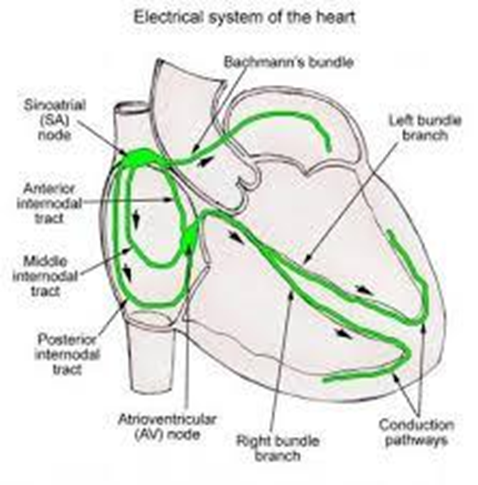In which of the following ways does a chemical buffer system normalize a pH of 7.30
Releases hydrogen ions
Blinds hydrogen ions
Creates additional hydrogen ions
Destroys excess hydrogen ions
The Correct Answer is B
a. Releases hydrogen ions: Releasing hydrogen ions (H⁺) into the solution would lower the pH, making the solution more acidic. This is not the correct way to normalize a slightly acidic pH of 7.30.
b. Blinds hydrogen ions: This is likely a typographical error, and it should be "binds hydrogen ions." Binding hydrogen ions (H⁺) would reduce the concentration of free hydrogen ions in the solution, thereby raising the pH and making the solution less acidic. This is the correct mechanism to normalize the pH of 7.30 to a more neutral level.
c. Creates additional hydrogen ions: Creating additional hydrogen ions would further lower the pH, making the solution more acidic. This is not how a buffer system would normalize a slightly acidic pH.
d. Destroys excess hydrogen ions: While this option might seem correct, it is not typically how chemical buffer systems operate. Buffer systems usually bind (or release) hydrogen ions rather than destroy them.
Nursing Test Bank
Naxlex Comprehensive Predictor Exams
Related Questions
Correct Answer is B
Explanation
a. Purkinje fibers: Purkinje fibers are the last structures to receive the signal within the ventricles, causing them to contract.
b. Bundle of His: The correct sequence of the cardiac conduction system is as follows: The electrical impulse originates in the sinoatrial (SA) node, then travels to the atrioventricular (AV) node. From the AV node, the impulse travels to the Bundle of His. After the Bundle of His, the impulse travels through the bundle branches and finally reaches the Purkinje fibers, which facilitate the contraction of the ventricles.

c. Bundle branches: The electrical impulse for heartbeat originates in the SA node (sinoatrial node). It then travels to the AV node (atrioventricular node), which delays the signal before sending it to the Bundle of His. The Bundle of His splits into right and left bundle branches, which distribute the electrical signal to the Purkinje fibers in the ventricles, causing them to contract in a coordinated fashion.
d. SA node: The SA node initiates the electrical impulse, not receive it after the AV node.
Correct Answer is A
Explanation
a. Smooth: Correct. Smooth muscle cells in the walls of blood vessels regulate their diameter through contraction and relaxation.
b. Striated: Striated muscles, also known as skeletal muscles, are involved in voluntary movements and are not responsible for regulating blood vessel diameter.
c. Cardiac: Cardiac muscle is found in the heart and is responsible for pumping blood, not regulating blood vessel diameter.
d. Skeletal: Skeletal muscles control voluntary movements and are not involved in regulating blood vessel diameter.
Whether you are a student looking to ace your exams or a practicing nurse seeking to enhance your expertise , our nursing education contents will empower you with the confidence and competence to make a difference in the lives of patients and become a respected leader in the healthcare field.
Visit Naxlex, invest in your future and unlock endless possibilities with our unparalleled nursing education contents today
Report Wrong Answer on the Current Question
Do you disagree with the answer? If yes, what is your expected answer? Explain.
Kindly be descriptive with the issue you are facing.
